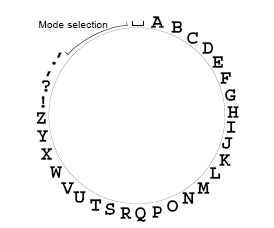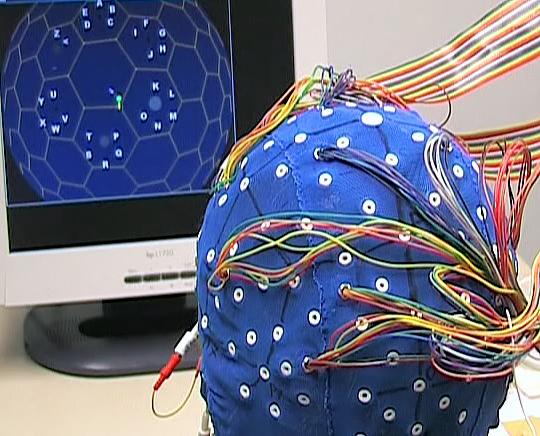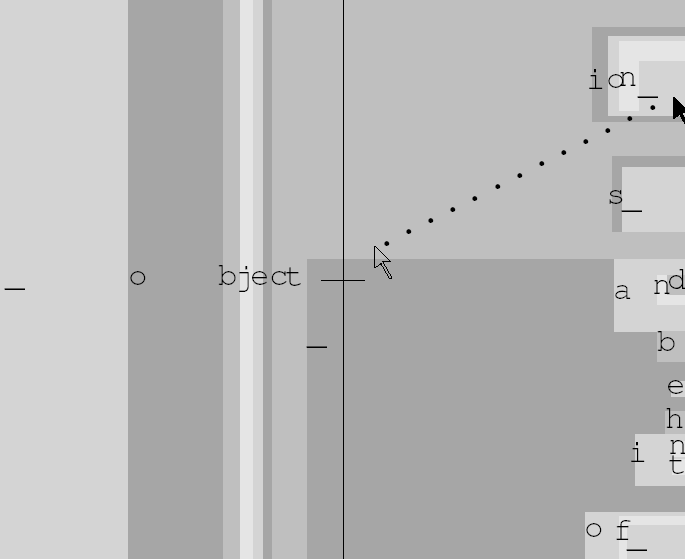








Location: Wolfson Medical School Building, Seminar Room 3 (The Gannochy), Glasgow University, organised by Department of Computing Science, Dynamics & Interaction group.
Format: The workshop will be a one day workshop, with talks about text entry with dynamic, gestural and continuous entry approaches, implemented on mobile systems, Brain Computer Interfaces, and touch screens.
The workshop, which is part of Glasgow University's EPSRC funded Computing Science Research Festival, 2005-06, has also been supported with background funding by the PASCAL network.
9:30-10:00 Registration & Coffee.
10:00-10:15 Roderick Murray-Smith, Introduction
10:15-10:50 Morten Proschowsky (DTU), An Intuitive text Input Method for Touch Wheels slides
10:50-11:35 Benoit Martin (Univ. Metz), VirHKey: a VIRtual Hyperbolic KEYboard with gesture interaction and visual feedback for mobile devices
11:35-11:50 Coffee
11:50-12:50 Per-Ola Kristensson (Linköping), Pattern Marks: A Stylus Graphical User Interface that takes Advantage of the Redundancy in Languages
ShapeWriter (previously SHARK shorthand) is a stylus-based text entry interface that makes it possible to write very fast on pen-based mobile devices. ShapeWriter recognizes word patterns mapped onto a keyboard layout using pattern-recognition, essentially creating an easy-to-learn shorthand system. I call these word patterns “pattern marks” and show that this concept can be generalized to create interesting user interfaces that go beyond the boundaries of traditional human motor limits imposed by Fitts’ law and the crossing law. As examples the Elastic Stylus Keyboard (ESK) that relaxes stylus typing accuracy by “breaking” Fitts’ law will be presented followed by ShapeWriter that is attractive for fast text input by pen. Last, I will present pattern-mark interfaces that go beyond text writing and make it possible to send commands easier and design new interesting fluid-action novel graphical pen- user interfaces (PUIs).
12:50-13:00 Spotlight session for any participants with text entry demos (1 slide each!)
13:00-14:00 Buffet lunch, and demos
14:00-15:00 David Mackay (Cambridge), The Dasher project
15:00-15:45 John Williamson (Glasgow), Designing the dynamics for text entry: Inference to modulate the control loop
(see the Hex paper, Pocket PC video and BCI videos for background)
15:45-16:00 Coffee
16:00-16:45 Poika Isokoski (Tampere), Multiple input devices and learning in text entry
The number of computing devices with different input devices is increasing along with the number of different text entry methods available for those devices. From the user's perspective this is not only a positive development. User's ability and willingness to learn new text entry methods is limited and this can slow down the adoption of new text entry methods. I will discuss multi-device text entry and learning using my own work and the systems presented in this workshop as examples. I will also propose guidelines for text entry system design based on observations related to learning and multi-device text entry. Finally, time permitting, I will describe one or two of my past projects on electomyography and eye trackers as input devices.
16:45-17:00 Round up discussions
17:00 onwards: Wine reception in DCS common room.
To register for the workshop, please contact Roderick Murray-Smith at rod@dcs.gla.ac.uk